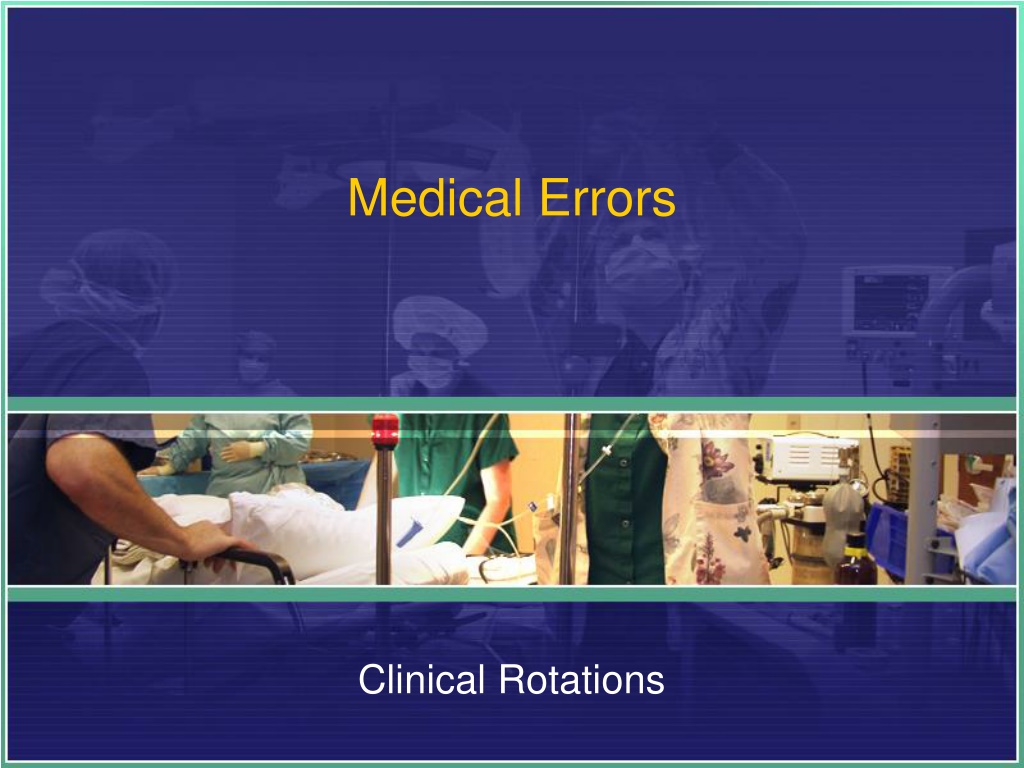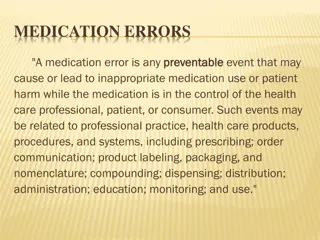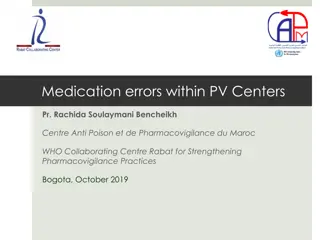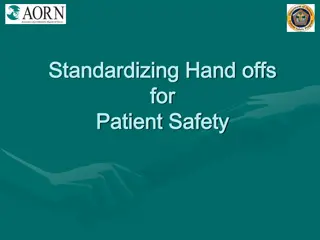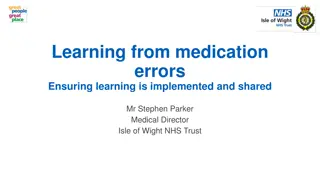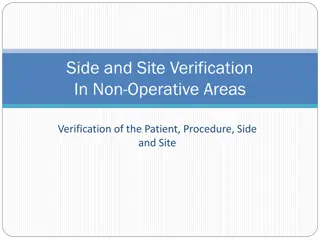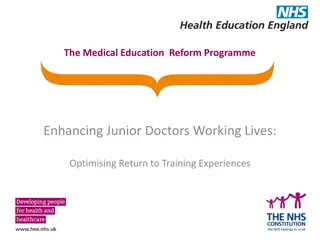Understanding Medical Errors and Patient Safety: A Critical Examination
Explore the alarming impact of medical errors on patient outcomes, with a focus on clinical rotations, national patient safety goals, and the Josie King Story. Uncover the importance of patient empowerment and clinician responsibility in improving healthcare quality.
Download Presentation

Please find below an Image/Link to download the presentation.
The content on the website is provided AS IS for your information and personal use only. It may not be sold, licensed, or shared on other websites without obtaining consent from the author. Download presentation by click this link. If you encounter any issues during the download, it is possible that the publisher has removed the file from their server.
E N D
Presentation Transcript
Medical Errors Clinical Rotations
Exam Bonus Question: List the National Patient Safety Goals +1 point each!
After your exam, look up these terms: 1. PICU 2. Dehydration 3. John Hopkins Medical Center 4. Narcotics 5. Methadone 6. Central Intravenous Lines 7. Narcan
Medical Errors A medical error is a preventable adverse effect of care, whether or not it is evident or harmful to the patient. This might include an inaccurate or incomplete diagnosis or treatment of a disease, injury, syndrome, behavior, infection, or other ailment. Medical errors cost tens of thousands of lives in US hospitals each year more than deaths from highway accidents, breast cancer, and AIDS combined.
Medical Errors in United States Studies have put the numbers of deaths anywhere from 44 000 to 98 000 annually in hospitals. That is the equivalent of at least 4 jet liners crash landing every week for one year without any survivors!! http://diabetesaustraliavic.files.wordpress.com/2011/12/plane-31_1261755576.jpg
Leading Causes of Death in US 1. 2. 3. 4. 5. 6. 7. 8. 9. 10. Intentional self-harm (suicide): 38,364 Heart disease: 597,689 Cancer: 574,743 Chronic lower respiratory diseases: 138,080 Stroke (cerebrovascular diseases): 129,476 Accidents (unintentional injuries): 120,859 Alzheimer's disease: 83,494 Diabetes: 69,071 Nephritis, nephrotic syndrome, and nephrosis: 50,476 Influenza and Pneumonia: 50,097
The Josie King Story Josie King Video
Group Discussion Questions 1. What factors contributed to Josie King s death? 2. Think about a time when you or a loved one felt worried about the quality of care being provided. Did you feel empowered to express your concerns? What did your provider do (or what could he/she have done) to make you feel more comfortable speaking up? 3. In the case of Josie King, how could the hospital and its providers have given Sorrel King more power over how Josie was treated? 4. If you plan to be a clinician, what are specific things you can do to make patients feel respected and included in decisions about their health care?
